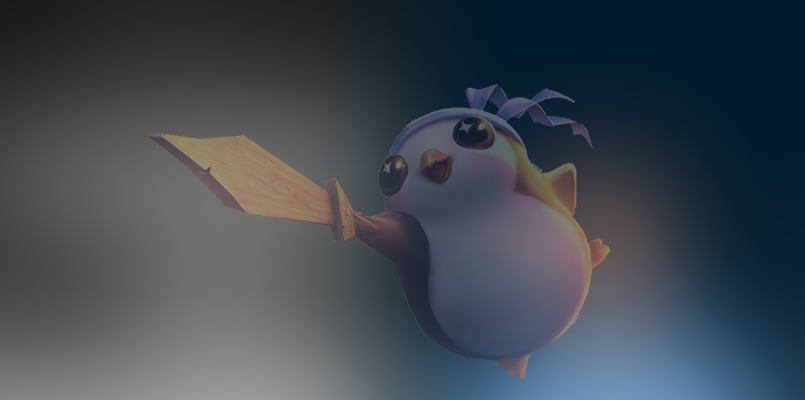Mentioned in this article
League/Tournament Brands:
Riot Games’ strategy-based game Teamfight Tactics has experienced steady decline in hours watched on Twitch over the course of the past month and a half after breaking onto the platform in June with formidable viewership statistics.
After starting off strong with 15.7M hours watched in its first seven days after beta testing opened for TFT, the game showed that it had the potential to be one of the top forms of content on Twitch with more than 10 hours watched per week for five weeks straight.
Not only was the game new, but it also had a few key elements that gave it added potential for longevity as a top performer of content. Being developed by Riot Games, TFT had the resources and expertise of one of gaming’s most high-profile companies, and its ties to Riot Games’ League of Legends gave it early publicity that any new game needs.
Additionally, the game fit an emerging niche genre in strategy-based gaming called “auto-battling.” So not only was the title something new from an established publisher, but it also appealed to an audience of gamers looking to dive into this summer’s up-and-coming genre of strategy games.
As one might expect, initially TFT viewership on Twitch caused a loss in viewers for other strategy games, and it also generated a noticeable dip in viewership for League of Legends, even though TFT is technically just a game mode in LoL.
Despite a strong first couple of weeks, TFT began to see a slow decline in viewers until Twitch Rivals announced that it would be hosting a tournament for the game mode on July 17-18. Though the game was seeing its viewership slide, the Twitch Rivals event provided a surge in hours watched, giving TFT its two most-watched days on Twitch ever. However, that viewership was relatively short-lived, and TFT’s decline became more rapid following the competition.
While no one cause is responsible for TFT’s decline, a few key events in the past month have pushed the game mode out of the spotlight and down the charts for top content on Twitch. The first of those events was the closing of the LoL Championship Series (LCS) and LoL European Championship (LEC) summer split regular season.
As teams began to vie for the final spots and seedings of LoL’s top esports leagues, viewership for those leagues on Twitch began to increase. Because much of TFT and LoL’s viewership overlaps, the increased attention that has come to LoL esports over the past month could be seen as a factor in TFT’s decline.
Secondly, a boost in viewership by Blizzard Entertainment’s online card game Hearthstone began in early August when the competing strategy-based game had an expansion release. Because of the strategic nature of Hearthstone, many broadcast personalities who played Hearthstone prior to TFT’s release were drawn to Riot Games’ auto-battler. However, once Blizzard released new content for the card game, viewership moved quickly Hearthstone.
That’s not to say that TFT didn’t still have an impact on the overall marketplace on Twitch for strategy-based games. In 2018, the August Hearthstone expansion produced much stronger viewership. The two days after its new card set was available the title racked up 4.6M hours watched on Twitch. That’s nearly double of what this year’s new expansion generated in its first two days, 2.6M hours watched.
It’s unfair to say that TFT could have been solely responsible for a decline in hype for Hearthstone’s newest expansion, but competition in the marketplace certainly plays a role. However, the same way that TFT affected Hearthstone, Blizzard Entertainment’s card game helped slow down viewership for TFT.
Prior to Hearthstone’s expansion release on Aug.t 7, TFT outperformed the game on Twitch every single day following the release of its beta. After the expansion came out it was a different story though. The two games’ hours watched totals have come very close to one another, with TFT edging out Hearthstone by generating 23.6M hours watched compared to the card game’s 20.5M.
Based on the trajectory of TFT and some recent history, there’s reason to believe that Riot Games’ take on auto-battlers might not have the staying that it was originally hyped to possess. When comparing TFT to Hearthstone, the game shows many of the same qualities that Apex Legends did following its release.
Both TFT and Apex Legends posted strong viewership numbers out of the gate and came from well-known, established gaming companies. Each also showed poise to be a top form of content for numerous weeks following their arrival on Twitch, unlike many games that see viewership fall flat quickly after one strong week.
The parallels extend to their declines as well, though. Much in the same way that Hearthstone boosted viewership with an expansion, Apex Legends’ main competitor in the battle royale sphere, Fortnite, took back its lead in hours watched on Twitch when it released new content.
While Apex Legends spent some time hovering around the top 10 following Fortnite’s return to the top of the battle royale genre on Twitch, the game’s steady decline saw it exit the upper echelon of content on Twitch, just like TFT in the past couple of weeks.
It’s impossible to predict how lasting an impact any game can have on Twitch, and sometimes it takes more than just a quality game and a few influencers to create content that will be a mainstay as one of the most-watched categories on the platform.
If this year has been any proof, the only thing that can be identified for sure is that even a full month’s worth of being one of Twitch’s top most-watched games isn’t enough to assure long-term stability as a form of content that will consistently attract a sizeable audience of gamers.

